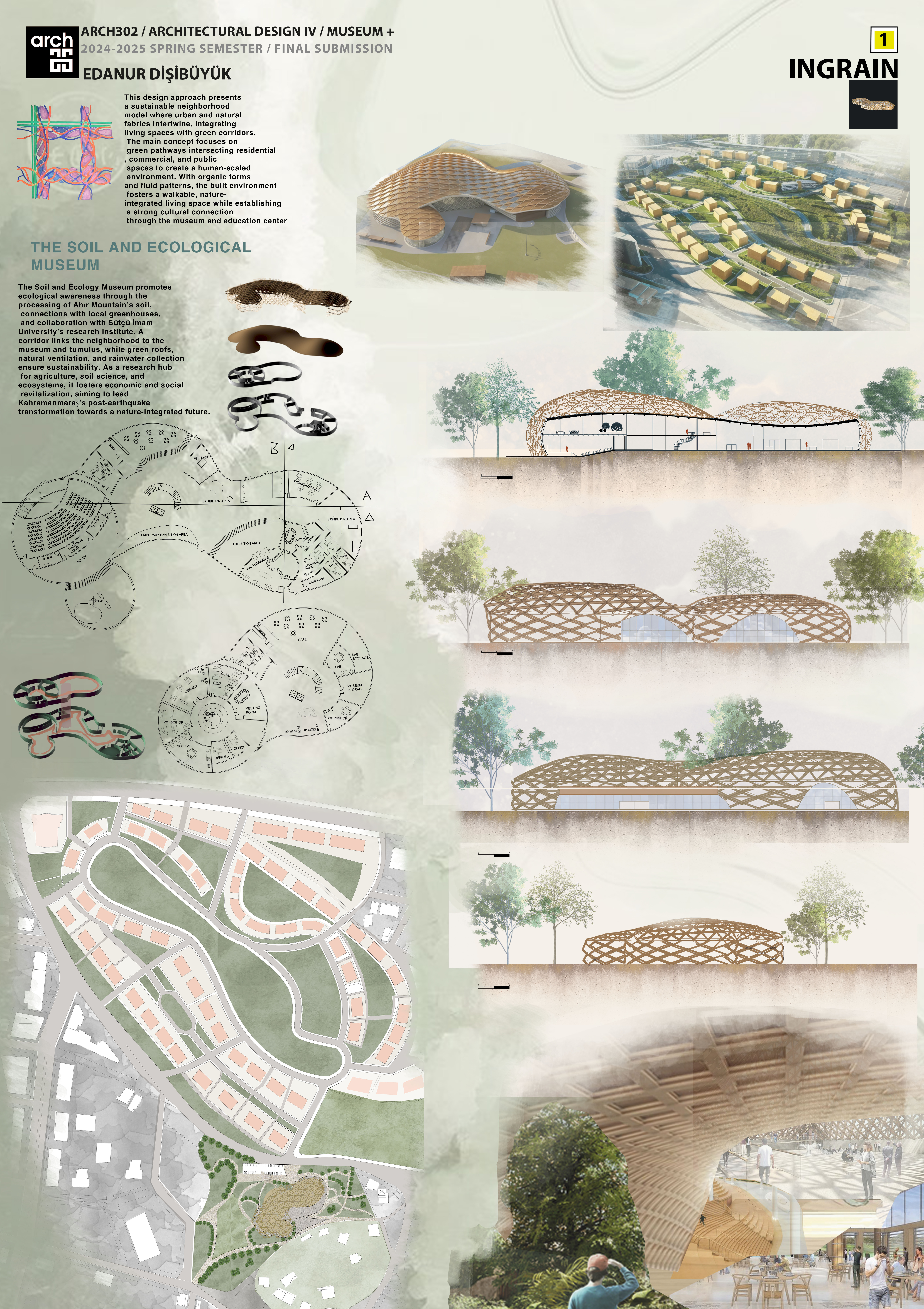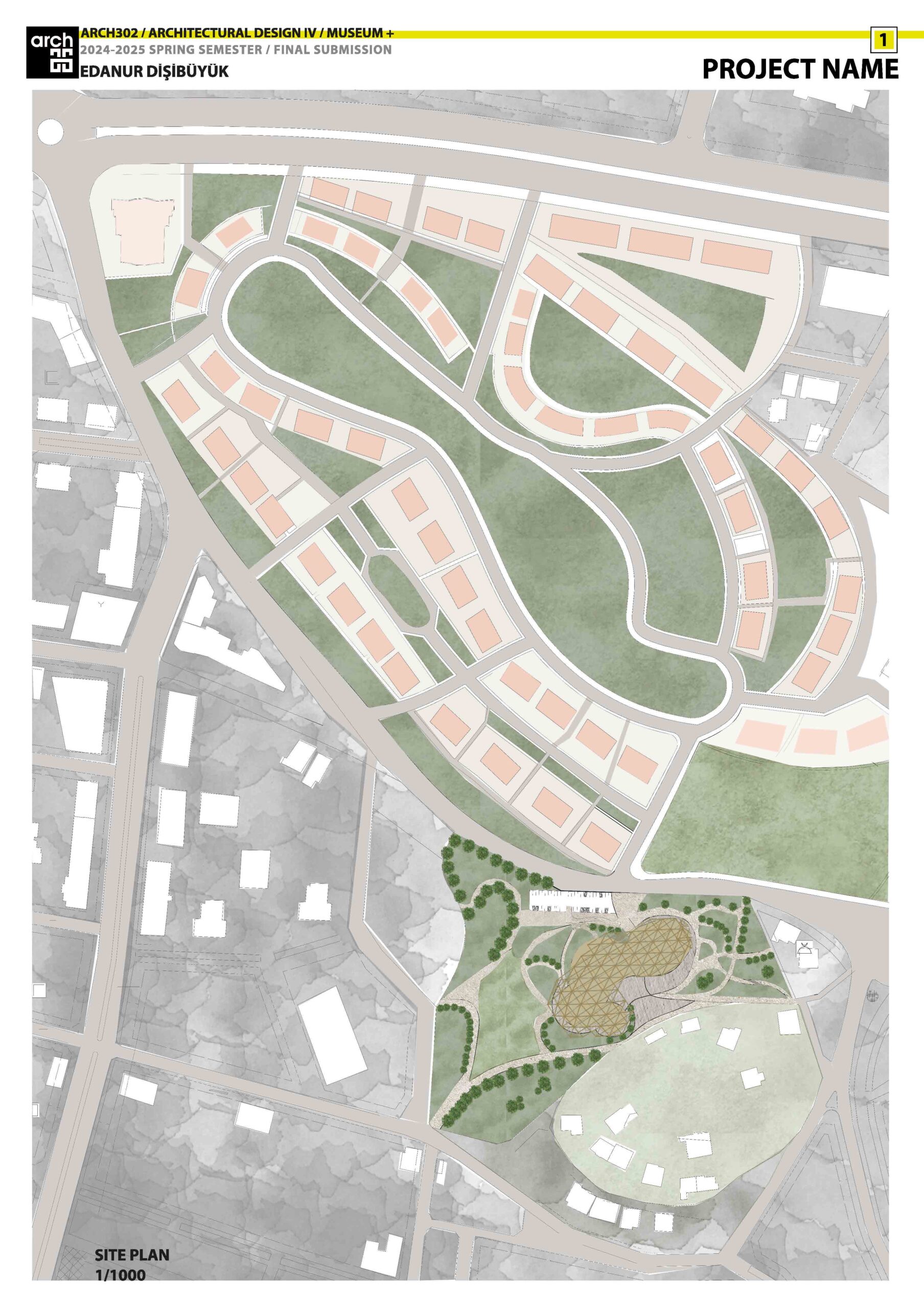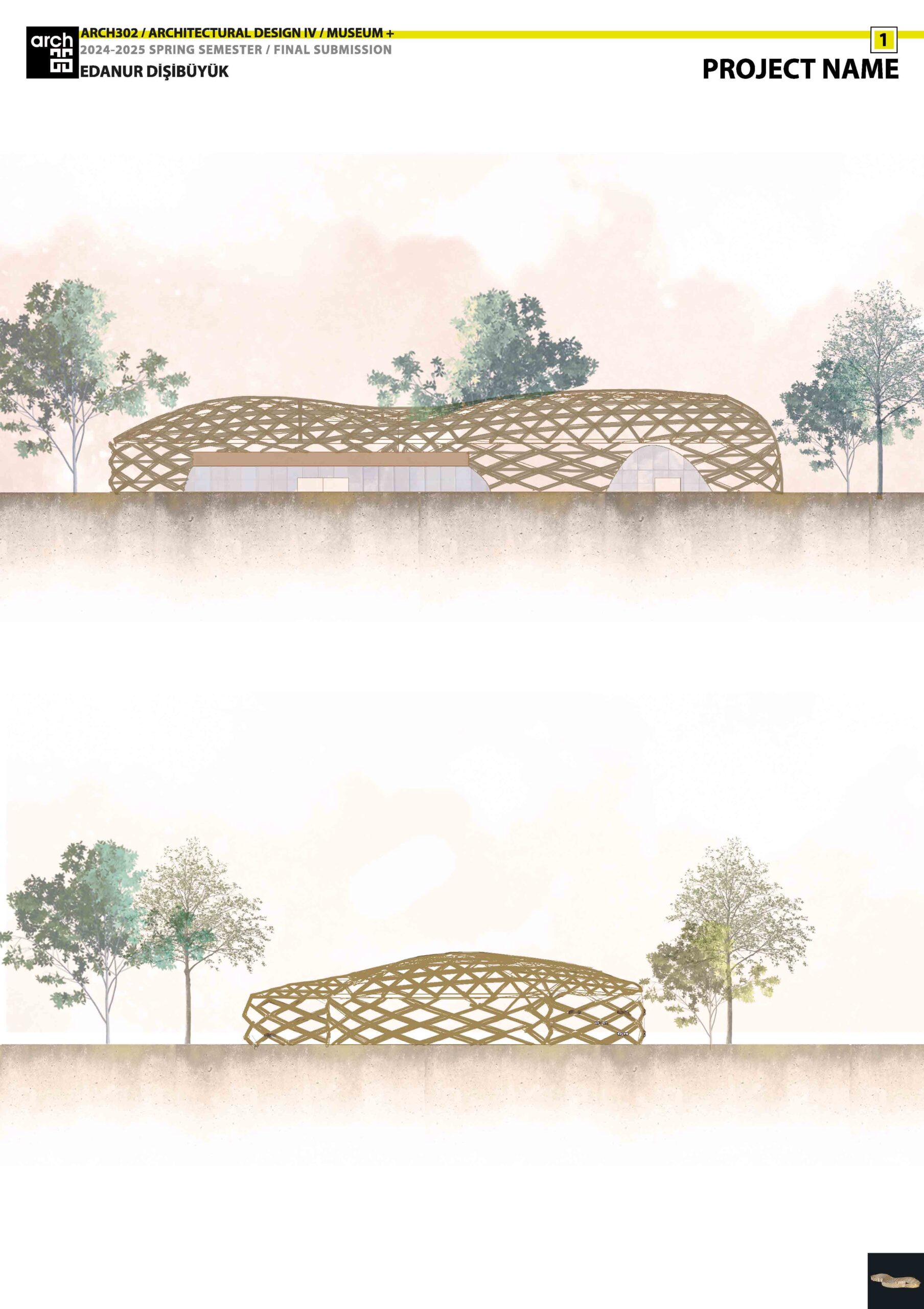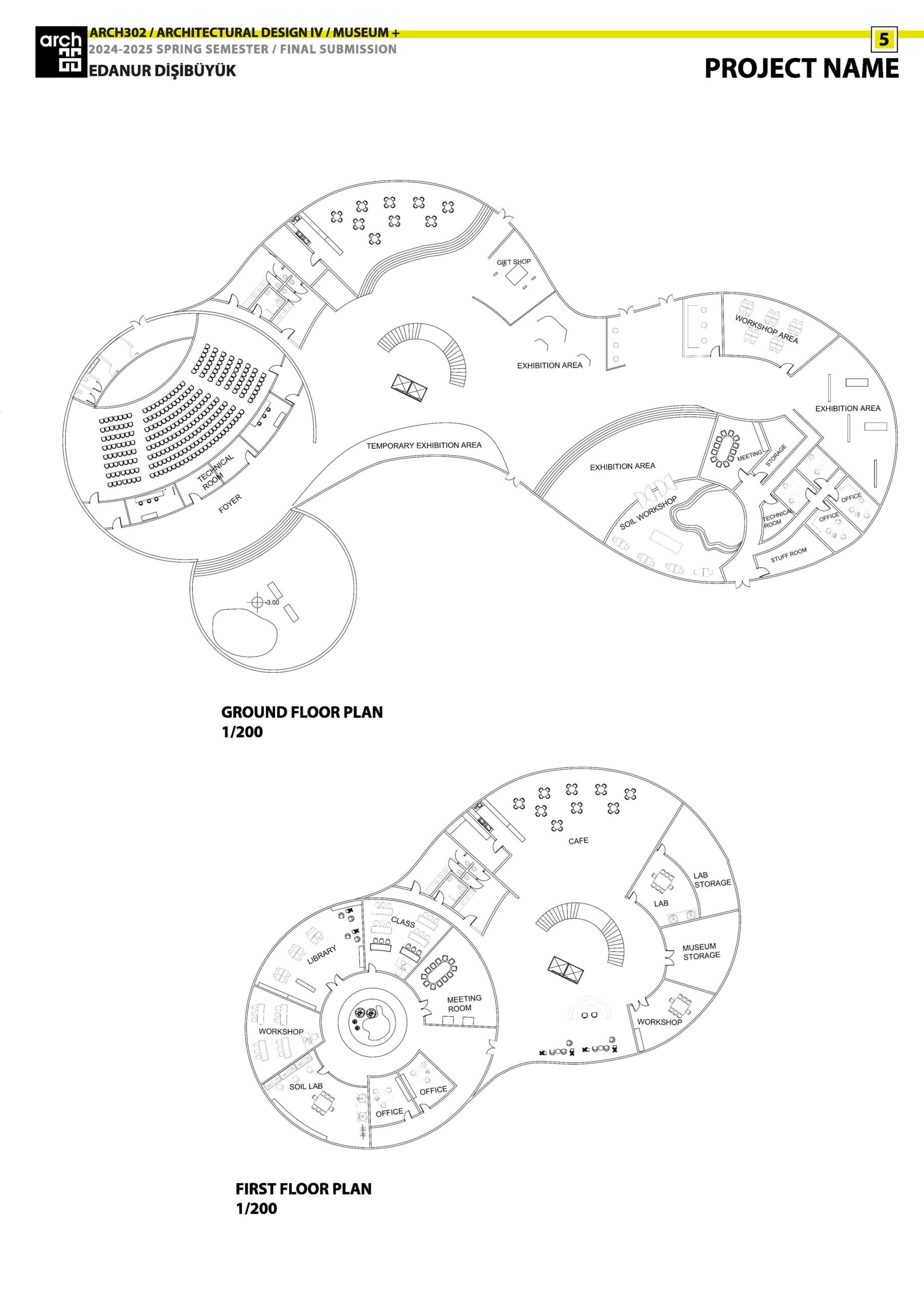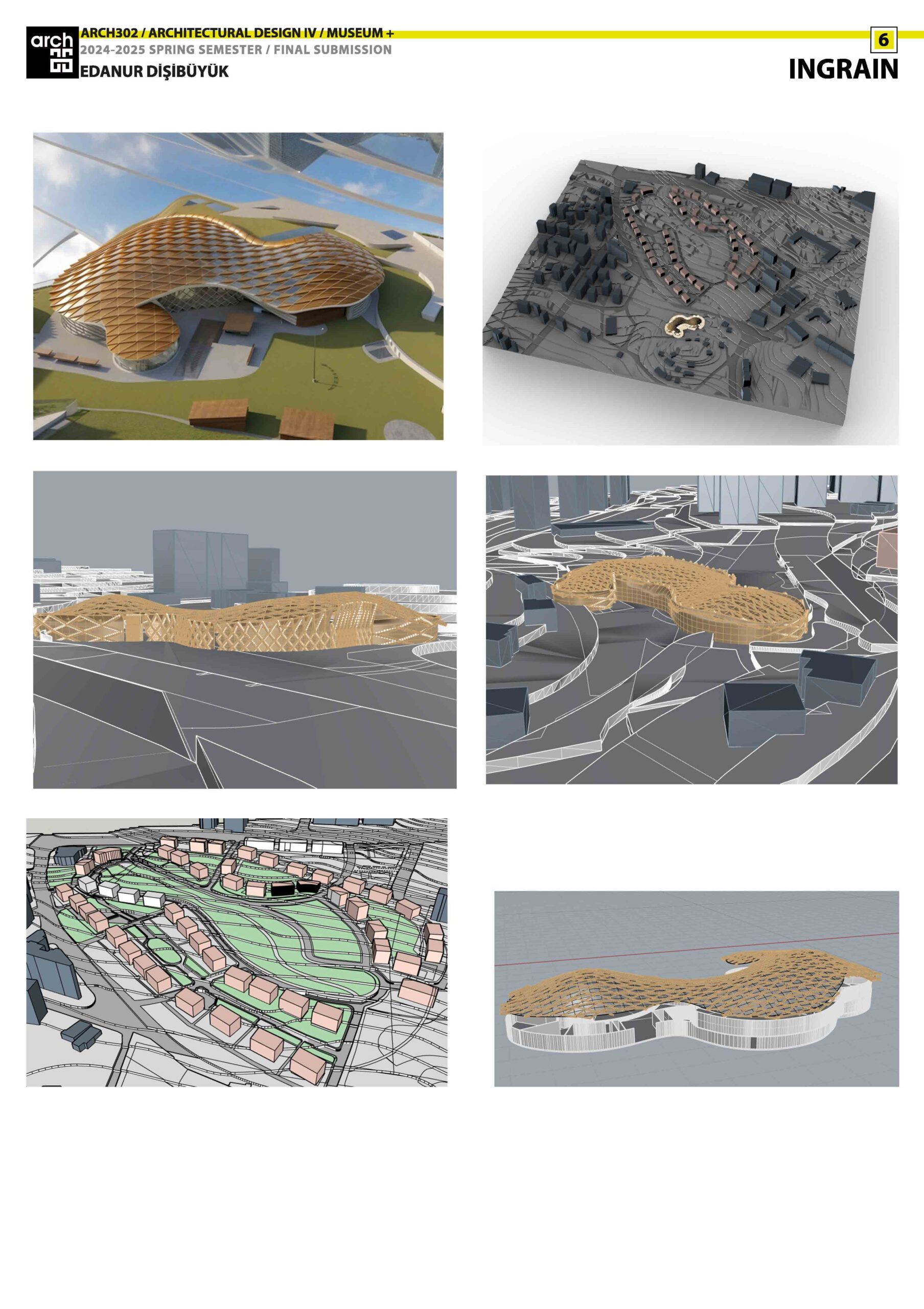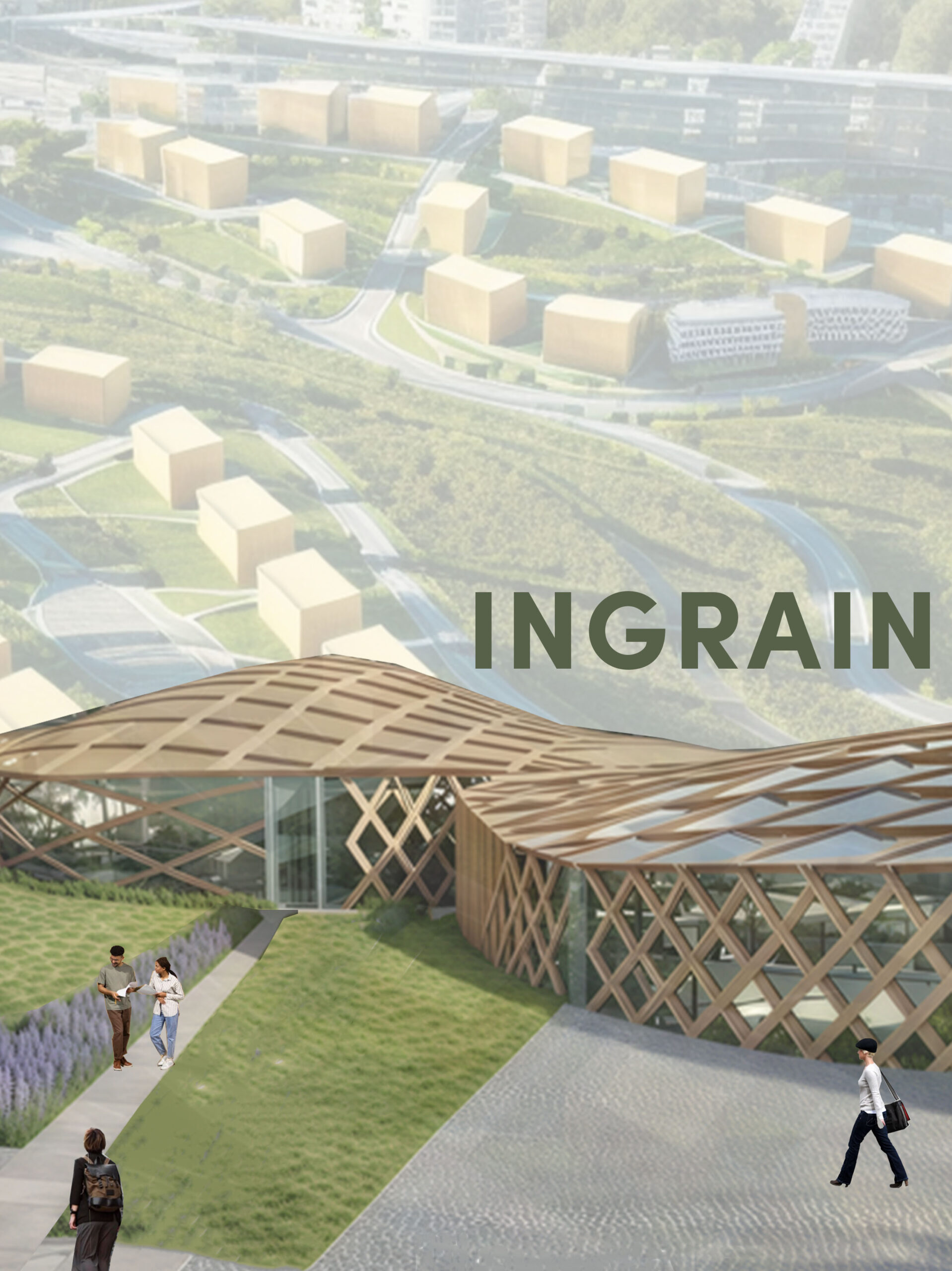INGRAIN / Edanur Dişibüyük
This project is a Soil and Ecology Museum located next to a historical tumulus in Üngüt, Kahramanmaraş. It is imagined not only as a museum, but as a living system where nature, culture, and research are woven together. The project is based on the concept of “Interwoven”—blending architecture, landscape, and human experience in one continuous flow.
The museum is designed to grow from the neighborhood like a branch, receiving a main green axis that extends through the site and into the museum grounds. This axis connects the public park and greenhouse zones to the museum’s open-air exhibitions and entrances. The spatial organization respects the site’s slope and uses level differences to divide the program: underground is the seed bank and laboratories, while above ground are exhibition spaces, a library, café, and a conference hall.
A laminated timber space-truss shell forms the main roof structure. This self-supporting “woven” roof is inspired by organic geometry and is supported by a steel frame underneath. The façade uses spider-glass systems, allowing transparency and lightness while preserving thermal comfort. Clay- and lime-based flooring materials reflect the ecological goals of the building.
Circulation inside the museum follows a gentle, flowing path that connects the different functions while remaining in constant dialogue with the landscape and the tumulus. Visitors move through indoor and outdoor spaces in a seamless way. The museum aims to be a bridge between past and future, science and tradition, soil and society.